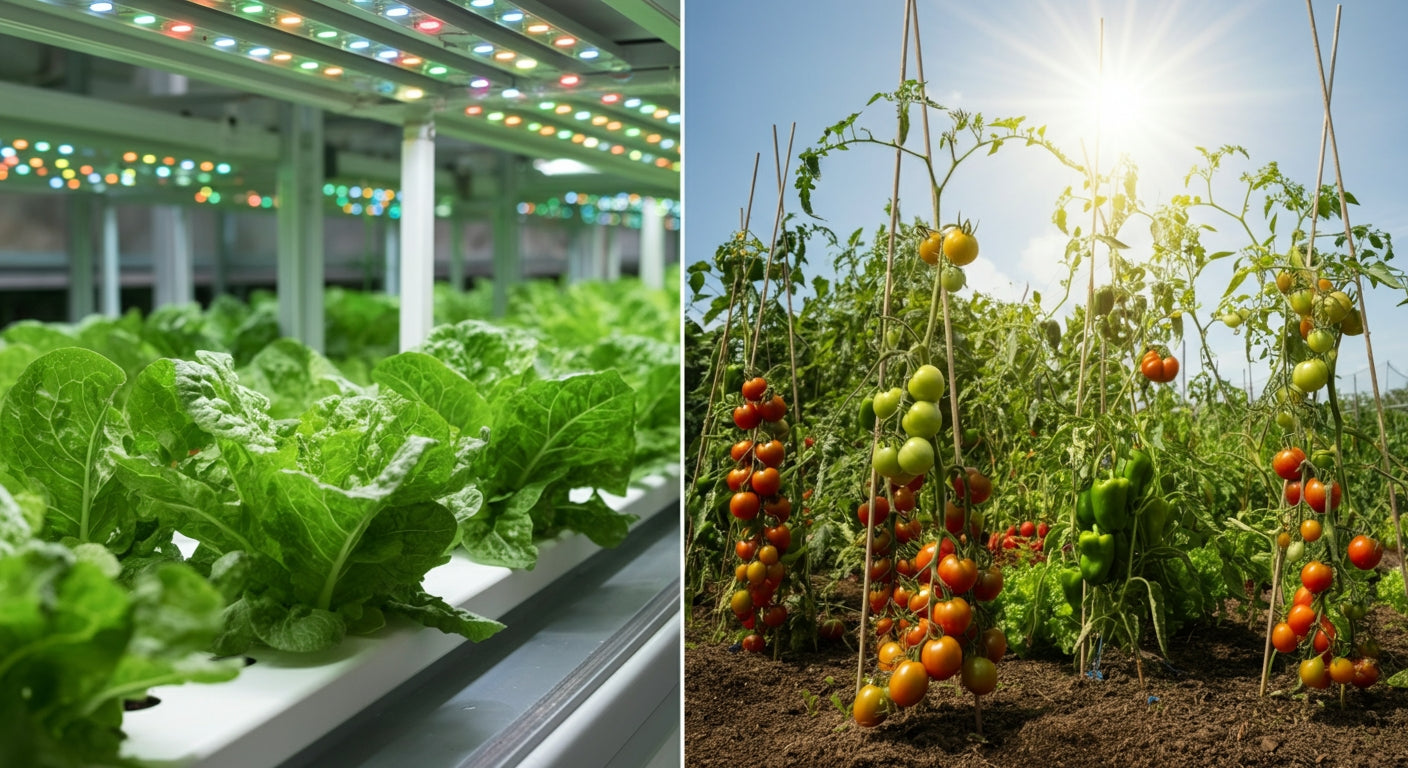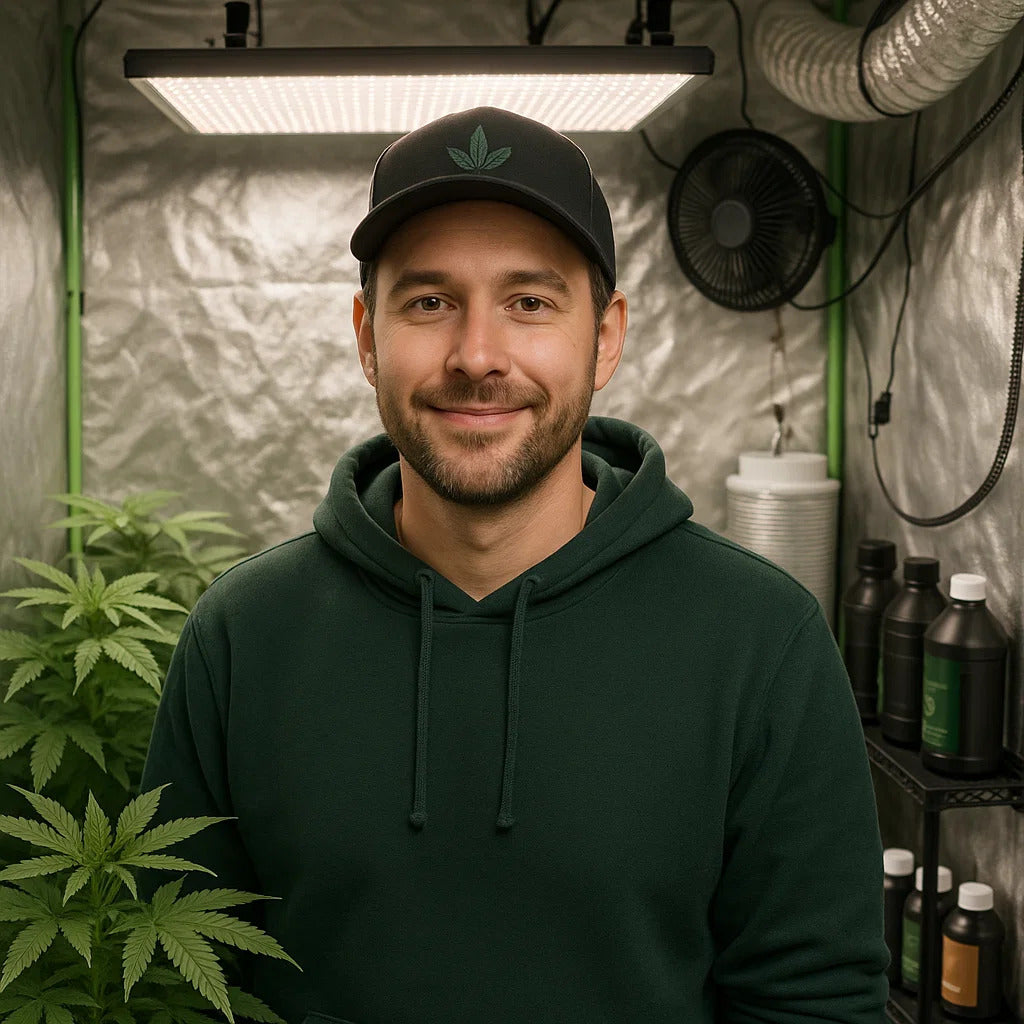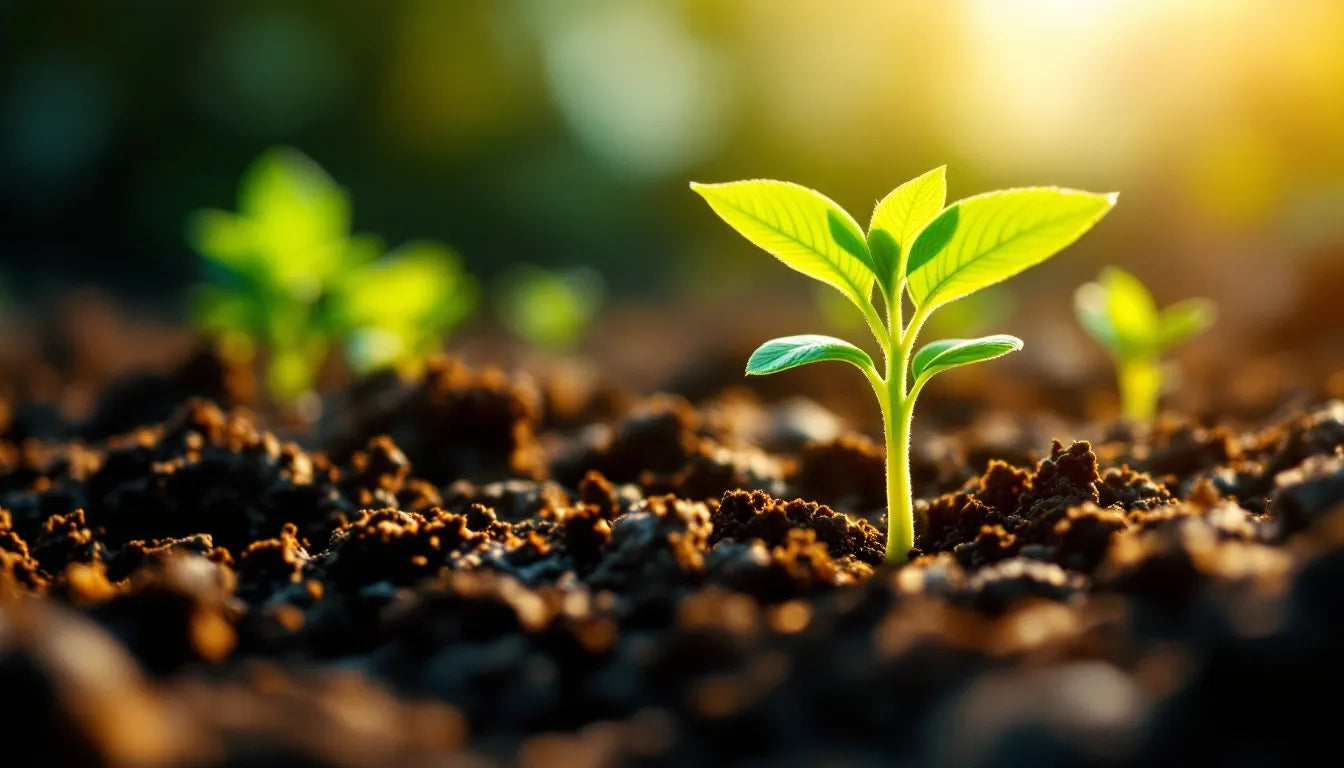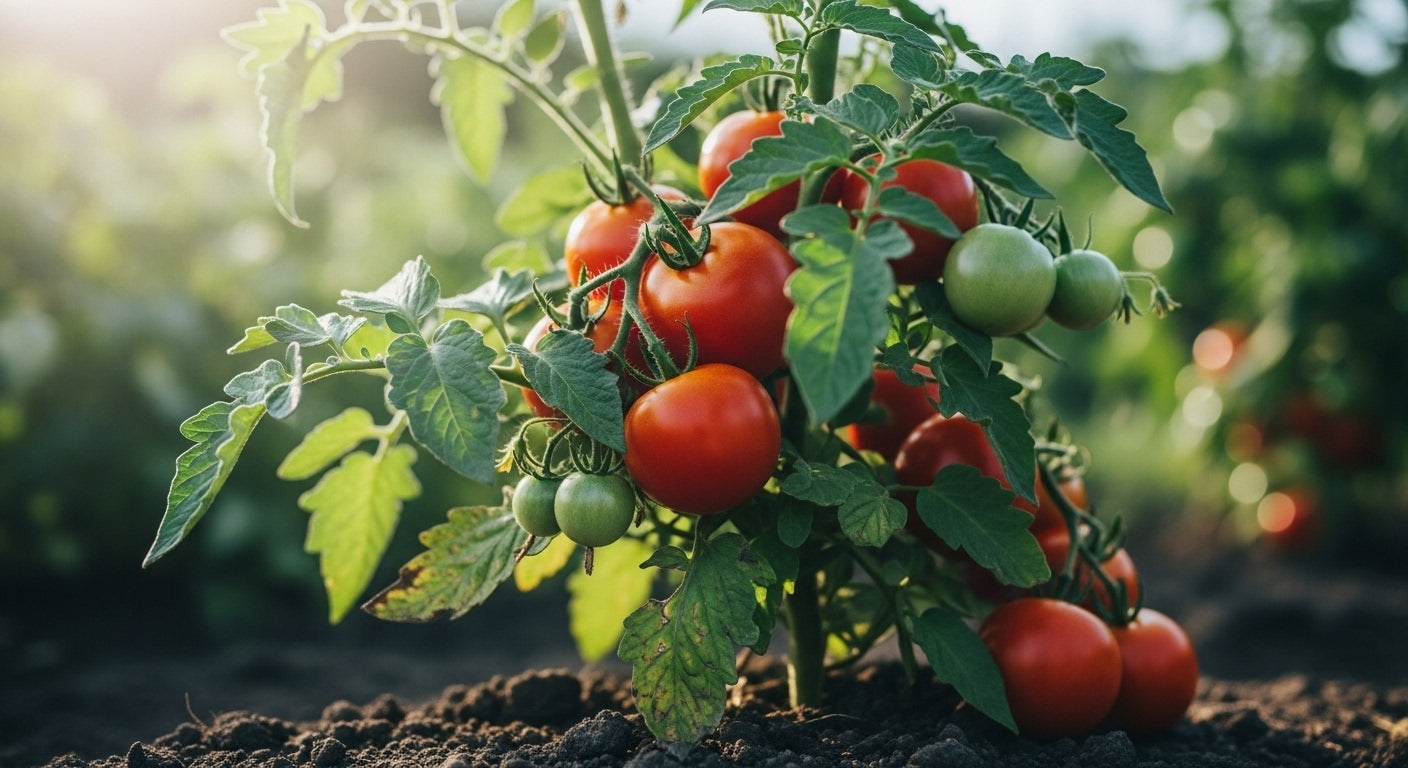
Indoor vs. Outdoor: Growing Plant Explained
Choosing between indoor and outdoor cultivation represents one of the most fundamental decisions facing new growers. Each method offers distinct advantages and challenges that impact everything from initial investment and ongoing costs to final yield quality and growing experience. Understanding these differences helps you select the approach that best matches your goals, resources, and circumstances.
The indoor versus outdoor debate isn't about finding a universally "better" method—it's about determining which approach aligns with your specific situation. Budget-conscious growers with outdoor space may thrive with sun-grown plants, while those prioritizing discretion, quality control, and year-round harvests often prefer indoor cultivation. This comprehensive comparison explores every factor affecting your decision.
Understanding the Core Differences
Indoor growing creates controlled microclimates independent of external weather, seasons, or natural light cycles. Growers manage every environmental variable—temperature, humidity, light intensity, spectrum, and duration—through equipment and monitoring systems. This complete control enables optimization impossible outdoors but requires significant equipment investment and ongoing electricity costs.
Outdoor cultivation harnesses free sunlight while working within natural seasonal cycles and local climate conditions. Plants grow in ground soil or large containers, developing naturally under the sun's full-spectrum light. Weather patterns, pests, and seasonal limitations constrain outdoor grows, but dramatically lower operating costs and potential for massive plant sizes offer compelling advantages.

Hybrid approaches combine both methods' benefits. Many experienced growers start plants indoors under controlled conditions using professional grow tent setups, then transition to outdoor locations after the last frost. This protects vulnerable seedlings while capturing outdoor growing's size and cost advantages during main development. Learn more in our guides on indoor growing and outdoor cultivation.
Initial Investment and Setup Costs
Indoor growing requires substantial upfront equipment purchases. Basic indoor setups start at $500-800 including grow tent, LED lighting, ventilation, and basic accessories. Mid-range quality systems cost $1,000-2,000, while professional-grade setups with advanced climate control reach $3,000-5,000+. The Gorilla Grow Tent Kits bundle essential components at package pricing that reduces individual purchasing costs.
Essential indoor equipment includes:
- Grow tent: $150-400 depending on size and quality
- LED grow lights: $300-800 for quality full-spectrum systems
- Ventilation system: $150-300 for inline fans and ducting
- Climate control: $50-200 for fans, thermometers, hygrometers
- Growing containers and medium: $50-150
- Nutrients and supplements: $50-100 initially
Outdoor cultivation costs significantly less initially. Expect $100-500 for outdoor setup including quality soil/amendments, containers (if not planting in ground), basic nutrients, and pest management supplies. The sun provides free lighting, natural air circulation eliminates ventilation costs, and ambient conditions handle climate control. For detailed tent sizing, check our grow tent size comparison guide.
However, outdoor grows require suitable space—private yard, balcony, or legal outdoor location. Property costs or rental considerations may affect true outdoor growing viability. Security measures like fencing or cameras add expenses indoor growers avoid through inherent discretion.
Ongoing Operating Costs
Electricity consumption represents indoor growing's primary ongoing expense. Lighting accounts for 70-80% of electrical costs, with a 600W LED system running 12 hours daily costing $25-35 monthly at average residential rates. Add ventilation, circulation fans, and climate control, and monthly electricity increases $40-80 for typical 4x4 setups. Annual electricity costs range from $500-1,200 depending on setup size and local rates.
Indoor equipment maintenance includes periodic filter replacements ($30-50 annually), nutrient purchases ($100-200 per grow), and eventual component upgrades as technology advances. Quality equipment like the Xi420 LED Grow Light with 50,000+ hour lifespan minimizes replacement frequency, but budget for some ongoing equipment expenses.
Outdoor growing's ongoing costs focus on nutrients ($100-200 per season), pest management ($50-150), and water (typically minimal unless metered). No electricity costs for lighting or ventilation create dramatic operational savings. A $200-400 outdoor season compares favorably against $600-1,200 annual indoor costs for similar plant counts.
Weather-related expenses occasionally impact outdoor grows. Severe weather may require protective structures, emergency pest treatments for weather-stressed plants, or crop loss replacement costs. These unpredictable expenses average out over multiple seasons but can impact individual years significantly.
Environmental Control and Growing Conditions
Indoor cultivation provides precise environmental management impossible outdoors. Maintain optimal temperatures year-round (70-85°F vegetative, 65-80°F flowering) regardless of external weather. Control humidity at each growth stage (65-70% seedling, 50-70% vegetative, 40-50% early flowering, 30-40% late flowering) preventing mold while supporting healthy transpiration.
The Gorilla GXi Temperature & Humidity Sensor with laboratory-grade precision (±0.3°C accuracy) enables monitoring and automated climate control maintaining perfect conditions 24/7. Automated systems like GXi Inline Fans with AdaptiveAir technology adjust ventilation based on real-time readings, optimizing conditions without constant manual intervention. Learn about advanced climate control in our guide on air conditioning in grow tents.

Outdoor growers work within natural limitations. Summer heat may stress plants requiring shade structures or increased watering. Cold snaps during spring/fall threaten young plants or late-season harvests. Humidity fluctuates with weather—rainy periods increase mold risk while arid conditions stress plants. Successful outdoor growing requires climate-appropriate strain selection and adapting techniques to local conditions.
Light cycle control separates indoor and outdoor fundamentally. Indoor growers precisely manage photoperiods—18-24 hours daily light during vegetative growth, then 12/12 for flowering. This control enables year-round harvests and plant size management. Outdoor photoperiod strains flower based on natural day length changes, limiting harvest timing to specific seasons. Autoflowering strains provide more outdoor flexibility but generally yield less than photoperiod varieties.
Plant Size and Yield Potential
Outdoor plants grow significantly larger than indoor specimens. Unrestricted root systems in ground soil support plants reaching 8-20+ feet tall, occasionally exceeding these heights under optimal conditions. Individual outdoor plants commonly produce 1-5 pounds dried flower, with exceptional plants yielding 10+ pounds. This massive size potential creates per-plant yield advantages outdoor growing offers.
Indoor plants remain smaller due to space constraints and controlled vegetative periods. Typical indoor plants grow 2-6 feet tall, with training techniques managing height within tent dimensions. Individual plant yields range from 2-8 ounces depending on genetics, skill, and growing duration. However, indoor growing enables multiple annual harvests—typically 2-4 cycles yearly versus outdoor's single seasonal harvest. Explore size management in our guide on how big plants grow.
Annual yield comparisons favor indoor growing for serious cultivators. A 4x4 tent producing four harvests yearly (600-1200 grams per harvest) delivers 2400-4800 grams annually. An equivalent number of outdoor plants might produce 1500-3000 grams in a single season. Indoor growing's harvest frequency often surpasses outdoor's per-plant size advantage, especially in regions with short growing seasons.
Space efficiency dramatically favors indoor cultivation. A 4x4 grow tent (16 square feet) accommodates 4-9 plants producing multiple annual harvests. Equivalent outdoor plants require 64-144 square feet with access for maintenance. Indoor vertical space utilization through training techniques maximizes yields per square foot impossible outdoors without sophisticated trellising systems.
Quality, Potency, and Consistency
Indoor plants typically achieve higher tested potency than outdoor crops. Controlled environments eliminate stress that reduces cannabinoid production, while optimized nutrition and light intensity maximize resin development. Consistent conditions throughout flowering enable full trichome maturation, producing dense, resinous flowers with exceptional bag appeal.
Terpene profiles benefit from indoor climate control. Precise temperature and humidity management during late flowering preserves delicate aromatic compounds that heat and humidity variations can degrade. Many connoisseurs prefer indoor flower for complex, preserved terpene expressions creating superior flavor and aroma experiences.
Outdoor plants offer unique qualities indoor growing can't replicate. Natural sunlight includes beneficial UV wavelengths that enhance terpene production and cannabinoid diversity. Some consumers prefer outdoor flower's robust, full-bodied effects and complex terpene profiles developed under natural conditions. The sun's full spectrum creates cannabinoid and terpene ratios impossible under artificial lighting despite advances in LED technology. Learn about UV benefits in our article on UV light for plants.
Consistency favors indoor cultivation definitively. Every harvest from the same controlled environment produces remarkably similar results—critical for medical users requiring consistent dosing or commercial operations maintaining brand standards. Outdoor grows vary significantly between seasons based on weather patterns, making consistency virtually impossible despite identical genetics and techniques.

Timeline and Harvest Frequency
Indoor growing enables year-round cultivation independent of seasons. Start new plants any day of the year, harvesting 3-6 months later depending on strain genetics and vegetative duration. Perpetual harvest systems with multiple tents at different stages provide fresh harvests every 4-8 weeks continuously. This harvest frequency creates consistent supply impossible with outdoor's single annual cycle. Read about perpetual harvest setups for continuous production.
Complete indoor grow timelines include:
- Germination: 3-7 days
- Seedling stage: 2-3 weeks
- Vegetative growth: 4-8 weeks (grower controlled)
- Flowering: 8-12 weeks (strain dependent)
- Drying and curing: 3-8 weeks
- Total: 4-7 months seed to consumption
Outdoor growing follows natural seasonal cycles with single annual harvests. Spring planting after last frost, summer vegetative growth under long days, fall flowering as day length decreases, and harvest before first frost create fixed timeline dictated by climate. Northern regions may achieve only one 4-6 month season, while Southern climates potentially support two seasons if fall harvest finishes before winter. For complete timelines, see our guide on how long plants take to grow.
Time investment differs substantially. Outdoor plants require less daily attention—checking every 2-3 days for watering and pest issues suffices during most of the season. Indoor growing demands more frequent monitoring (ideally daily) of environmental conditions, nutrient levels, and plant health due to controlled system's need for regular intervention.
Security, Privacy, and Legal Considerations
Indoor growing provides inherent discretion outdoor cultivation cannot match. Plants remain completely hidden from neighbors, passersby, or property visitors. Quality Gorilla Grow Tents with 1680D canvas and sealed construction contain both visible and odor indicators when paired with proper carbon filtration. This security proves invaluable in areas where social stigma persists despite legal cultivation.
Odor control represents a significant security consideration. Flowering plants produce strong, distinctive aromas outdoor growers cannot effectively contain. Indoor cultivation with carbon filters and sealed ventilation systems eliminates detectable odors outside the growing space. The GXi inline fan systems paired with quality carbon filters provide professional-grade odor elimination.
Legal compliance varies significantly by jurisdiction with different rules for indoor versus outdoor cultivation. Many legal regions restrict outdoor growing—prohibiting visible plants from public areas, requiring fenced yards, or banning outdoor cultivation entirely while permitting indoor grows. Some jurisdictions limit plant counts more restrictively for outdoor grows than indoor. Always research local regulations before choosing your growing method.
Theft risk affects outdoor grows disproportionately. Visible outdoor plants attract attention and potential theft during late flowering when large, obvious buds develop. Indoor grows eliminate this vulnerability, though home security remains important for valuable equipment and harvested product regardless of growing method.
Pest and Disease Management
Outdoor cultivation faces constant pest and disease pressure from natural environment exposure. Common outdoor pests include spider mites, aphids, caterpillars, grasshoppers, and various beetles—all reproduce rapidly with unlimited population sources nearby. Beneficial insects, companion planting, and organic pesticides help but rarely eliminate pest presence entirely outdoors.
Weather-related diseases challenge outdoor growers significantly. Powdery mildew, downy mildew, and bud rot (botrytis) thrive in humid conditions common during late-season flowering. Preventing these diseases requires strategic strain selection, proper spacing, and sometimes protective structures—expenses and efforts indoor growers avoid.
Indoor pest management benefits from controlled access preventing most pest introductions. Proper sanitation, filtered intake air, and closed environment limit pest establishment dramatically. Problems that do develop remain contained and manageable through targeted treatments impossible outdoors. The sealed environment enables pest elimination rather than mere management.
Disease prevention proves simpler indoors through environmental control. Maintaining optimal humidity levels (30-40% during late flowering) and strong air circulation virtually eliminates mold and mildew issues. The controlled environment removes weather-related disease pressures that outdoor growers constantly battle. Learn prevention strategies in our guide on reducing humidity in grow tents.
Which Method Suits Your Situation?
Choose indoor growing when:
- Privacy and discretion matter: Neighbors, landlords, or social concerns require invisible cultivation
- Year-round harvests desired: Consistent supply needs or commercial operation demands
- Climate extremes exist: Harsh winters, intense summers, or short growing seasons
- Quality control priorities: Medical use requiring consistent potency or craft cultivation standards
- Limited outdoor space: Apartment balconies, rental restrictions, or no suitable outdoor area
- Local regulations favor indoor: Legal frameworks permitting only indoor cultivation
Select outdoor growing when:
- Budget constraints limit investment: Minimal startup capital available for equipment
- Suitable outdoor space exists: Private yard, rural property, or legal outdoor location
- Natural growing appeals: Preference for sun-grown, environmentally sustainable cultivation
- Maximum plant size desired: Space and regulations allow massive plants for huge yields
- Favorable climate available: Long warm seasons, moderate conditions, low pest pressure
- Lower-maintenance growing preferred: Limited daily availability for intensive care
Consider hybrid approaches combining both methods' advantages. Start indoors for environmental control during vulnerable early stages, then transplant outdoors for size development and reduced costs. Use indoor cultivation for high-value strains requiring careful attention while growing bulk crops outdoors. Indoor space for mothers and clones plus outdoor flowering combines controlled genetics with natural flowering's size benefits.
Frequently Asked Questions
Is indoor or outdoor cultivation more potent?
Indoor plants typically test higher in THC due to controlled conditions optimizing cannabinoid production and consistent high-intensity lighting. Indoor grows routinely achieve 20-30%+ THC with proper genetics and technique. Outdoor plants generally test 15-25% THC, though exceptional outdoor grows achieve similar potency to indoor. However, outdoor's full-spectrum sunlight creates unique cannabinoid and terpene profiles some users prefer despite lower tested potency numbers.
Which growing method costs less overall?
Outdoor growing costs significantly less both initially ($100-500 vs $500-3,000+ indoor) and operationally ($200-400 per season vs $500-1,200 annually indoor). However, indoor's multiple annual harvests may produce more total yearly yield despite higher costs. Calculate cost per gram of final product—indoor often achieves lower cost per gram despite higher absolute expenses through increased harvest frequency and controlled productivity.
Can I grow the same strains indoors and outdoors?
Yes, most genetics grow both indoors and outdoors successfully, though performance varies. Some strains bred for indoor cultivation struggle with outdoor pests and weather stress. Conversely, massive sativa genetics challenging to manage indoors thrive in outdoor space. Choose strains marketed for your growing method or select versatile genetics performing well in both environments. Check our guide on plant growth stages for strain-specific considerations.
How much more can outdoor plants yield than indoor?
Individual outdoor plants commonly yield 1-5 pounds (450-2,270 grams) versus indoor plants producing 2-8 ounces (56-226 grams). However, indoor growers achieve 2-4 harvests annually versus outdoor's single season, often producing equivalent or greater annual yields. A 4x4 indoor setup averaging 800 grams per harvest with three annual cycles (2,400 grams yearly) matches or exceeds four outdoor plants producing 600 grams each (2,400 grams total).
Does outdoor herb taste different than indoor?
Yes, outdoor plants develop distinct flavor profiles from indoor flower. Sun-grown plants often display earthier, more robust terpene expressions from natural environmental stresses and full-spectrum sunlight. Indoor plants typically offer cleaner, more refined flavors with preserved delicate terpenes from controlled conditions. Neither is objectively "better"—preference depends on individual taste. Many consumers appreciate both for their unique characteristics.
Summary: Making Your Growing Method Decision
Indoor growing provides complete environmental control, year-round harvests, superior consistency, and inherent privacy at costs of $500-3,000 initial investment plus $500-1,200 annual electricity. Outdoor cultivation offers dramatically lower costs ($100-500 setup, $200-400 seasonal), massive plant sizes (1-5 pounds per plant), and sun-grown natural quality but limits harvests to single seasonal cycles with weather/pest pressures. Choose indoor for discretion, quality control, and harvest frequency; select outdoor for budget-conscious growing, space availability, and natural cultivation preferences.
Start Your Growing Journey Today
Ready to begin growing premium plants? Gorilla Grow Tent Kits provide complete indoor growing solutions eliminating equipment compatibility concerns while ensuring professional results from first harvest. Our legendary 1680D canvas construction supports 300+ pounds of equipment, Xi Series LED grow lights deliver targeted full-spectrum output engineered by Northern California cultivators, and GXi intelligent climate control maintains perfect conditions automatically.
Whether starting with a compact 2x2 tent for 1-2 plants or scaling to 5x5 professional operations, Gorilla provides equipment reliability that separates successful cultivation from frustrating failures. Lifetime expert support, comprehensive growing guides, and industry-leading warranties ensure your growing success regardless of experience level.
Don't let method choice paralyze your growing ambitions. Start with quality equipment matched to your situation, learn through hands-on experience, and adapt techniques based on results. Many successful growers eventually incorporate both methods—indoor for controlled year-round production plus outdoor for supplemental seasonal harvests. Browse our complete collection of growing solutions and transform your cultivation dreams into reality today.
For additional resources, explore our guides on growing at home, essential growing tips, and comparing grow tent sizes to continue your growing education.

Lena Myles
I'm a mushroom enthusiast and home cook based in Oregon. I'm passionate about foraging and creating fungi-focused recipes, especially delicious, plant-based dishes using gourmet mushrooms like trumpet, shiitake, and oyster. When I’m not in the kitchen, you’ll usually find me wandering the woods in search of new wild flavors.


